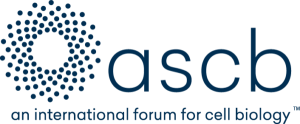Investigating mitochondrial–ER tethering in skeletal muscle cells
Refer a colleague
Explore the impact of OPA1 deletion in skeletal muscle on mitochondrial–endoplasmic reticulum (ER) tethering and the electron microscopy techniques used to investigate these mitochondrial–ER contact sites (MERCs) in this webinar with Antentor Hinton of the Vanderbilt School of Medicine Basic Sciences (TN, USA).
MERCs are protein- and lipid-enriched hubs that mediate interorganellar communication by contributing to the dynamic transfer of Ca2+, lipid and other metabolites between these organelles. Defective MERCs are associated with cellular oxidative stress, neurodegenerative disease, and cardiac and skeletal muscle pathology via mechanisms that are poorly understood. Antentor’s lab previously demonstrated that skeletal muscle-specific knockdown (KD) of the mitochondrial fusion mediator optic atrophy 1 (OPA1) induced ER stress and correlated with an induction of Mitofusin-2, a known MERC protein. In their present study, they are testing the hypothesis that OPA1 downregulation in skeletal muscle cells alters MERC formation by evaluating multiple myocyte systems, including from mice and Drosophila, and in primary myotubes.
What will you learn?
- 3D electron microscopy techniques for mitochondrial investigations
- How MERC tethering affects bioenergetics
- Calcium changes by ATF4 and OPA1 alteration
- The potential involvement of mTORC in MERC function
Who this may interest?
- Biophysicists
- Physiologists
- Structural biologists
- Mitochondrial scientists
Speaker
 Antentor Hinton
Antentor Hinton
Assistant Professor
Vanderbilt School of Medicine Basic Sciences (TN, USA)
Antentor is a first-generation PhD holder and an African-American tenure-track Assistant Professor in the Department of Molecular Physiology and Biophysics at Vanderbilt University and the Ernest E. Just Early Career Investigator. He was a former Burroughs Wellcome Fund Postdoctoral Enrichment Scholar, EE Just Postgraduate Fellow in Life Sciences, and Ford Foundation Fellow working at the University of Iowa (IO, USA) in the laboratory of E. Dale Abel.
To date, he has authored 93 papers, given over 170 invited talks and gleaned 55 awards, including three University-wide awards for mentorship, an organizational mentorship award, and societal-level awards for mentoring from the American Society for Cell Biology. He has mentored over 85 graduate, medical, postbacc, and undergraduate students; medical residents; and postdoc fellows. His laboratory utilizes SBF-SEM and TEM Quantification to investigate these various aspects of mitochondrial changes during pathophysiological states, mechanisms that regulate molecular transfer between and changes in morphology of the mitochondria and endoplasmic reticulum (ER), and how these mechanisms are altered during the pathophysiological states of diabetes, obesity, and cardiovascular disease. The Hinton group applies techniques such as primary cell isolation, bioinformatics programming for large data sets, in vitro exercise, confocal/stimulated emission depletion (STED) microscopy, transmission electron microscopy (TEM), 3D electron microscopy, and various types of image analysis. He has been awarded three University-wide awards for mentorship, an organizational mentorship award, and societal-level awards for mentoring (from ASCB).
In addition to running an active research lab dedicated to dysregulation of mitochondria in disorders including diabetes and cardiovascular disease, Antentor has been actively involved in diversity, equity and inclusion (DEI) at multiple levels. He is currently a national leader on matters related to diversity and mentoring and has published seven stem education papers and 31 diversity equity and inclusion commentaries. These pieces are constructive and heavily use the literature to make recommended suggestions to move diversity forward.
In association with
BioImaging North America (BINA) is a US-based non-profit serving the bioimaging communities of Canada, Mexico and the United States. BINA is engaging bioimaging scientists across North America by creating an inclusive and supportive community to share, advance and succeed together and works closely with partner networks around the globe.
This webinar was recorded on Tuesday 14 February 2024
Please enter your username and password below, if you are not yet a member of BioTechniques remember you can register for free.


